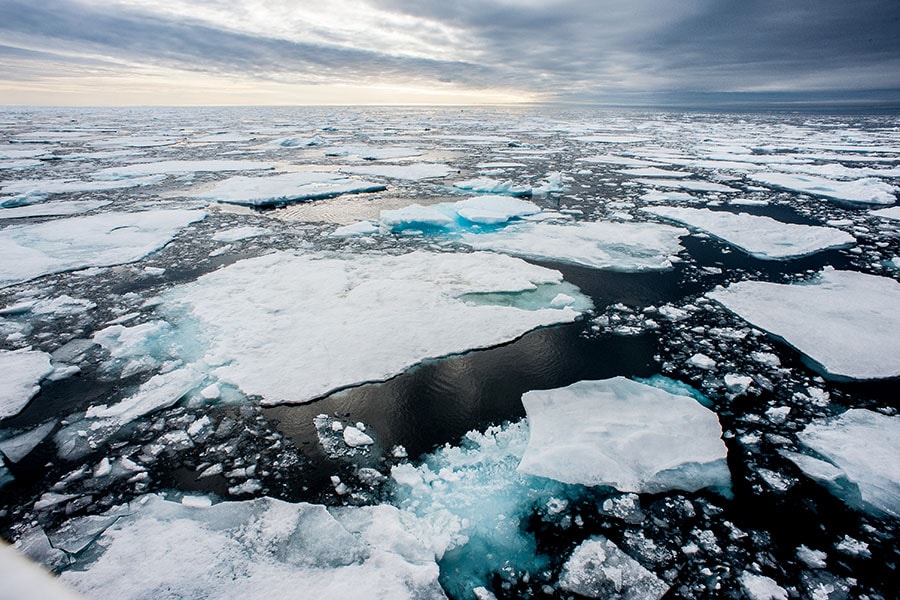
The great melting and eventual sinking: Have we reached the point of no return?
Fast-melting ice caps and glaciers have perilous and immediate dark sides and slow, excruciating social, ecological, and political pitfalls. Has the time come to explore out-of-the-box solutions to quickly slow down the effects of melting ice caps and rising sea levels? We explore
 NASA has issued a sinking prediction that by the mid-2030s, all coastal cities in the United States will witness high-tide flooding
Image: Shutterstock
NASA has issued a sinking prediction that by the mid-2030s, all coastal cities in the United States will witness high-tide flooding
Image: Shutterstock
Polar ice caps are melting and shrinking at the rate of 12.6 percent every decade, with almost 95 percent of the oldest and thickest sea ice of the Arctic already gone. The shrinking has brought unprecedented consequences for the Earth's ecosystem, responsible for almost a third of the total rise in water levels since 1993. Triggered by global warming, the melting and the consequent rise in sea levels are predicted to lead to disastrous outcomes by 2030. This is apparent from various reports and warnings issued by agencies worldwide. For instance, NASA has issued a sinking prediction that by the mid-2030s, all coastal cities in the United States will witness high-tide flooding.
The prediction is justifiably alarming, leading to a dawning realisation that humankind is facing a catastrophe of mammoth proportions not so far off in the future. The fact that the sinking is predicted to begin around 2030 is indeed ironic. 2030 is the year when the world aspires to achieve the 2030 Agenda by accomplishing the 17 sustainable development goals (SDGs) unveiled by the United Nations in 2015 for people, planet, prosperity, partnership, and peace.
The reverberating impact of melting icecaps
There is a more immediate, perilous dark side of the accelerating melting of icecaps/glaciers/ice sheets that the world is experiencing right now in 2023, seven years ahead of the sinking feared to happen from 2030 onwards. The three massive earthquakes and series of aftershocks in just 24 hours that have turned Türkiye and Syria to dust, killing more than 15,000 at the last count and leaving many more injured, might be linked to the melting of the glaciers on Mount Agri (Ararat). It is not fully understood yet, but the plausibility is undeniable since it is known that when glaciers melt, their load on tectonic plates decreases, freeing them to move against each other with enough friction to trigger earthquakes.It is not the first time the melting glaciers have wreaked havoc in Türkiye. In the past, there have been reports of one of the largest glaciers in Türkiye melting, triggering landslides. Associate Professor Oğuz Şimşek shared with a news agency in 2021, "Today, you can clearly see glaciers melting, especially at a height of 4,500 meters on the southern slopes of the mountain. Soil hydrated by the glaciers is flowing downwards, near residential areas."
Beyond the catastrophic events unleashed by the melting ice caps, which become headlines globally from time to time, such melting, along with other climate changes, is slowly but irreversibly changing life on Earth—producing multiple social, ecological, and political impacts. Rising sea levels not only threaten to wipe off coastal cities and populations across the globe but also affect the weather and wind patterns. The melting has unleashed extreme weather conditions, extinction of species, displacement of people to create a class of 'climate refugees,' salinity in low-lying areas, and has potentially exacerbated serious water-related conflicts.
[This article has been reproduced with permission from SP Jain Institute of Management & Research, Mumbai. Views expressed by authors are personal.]







